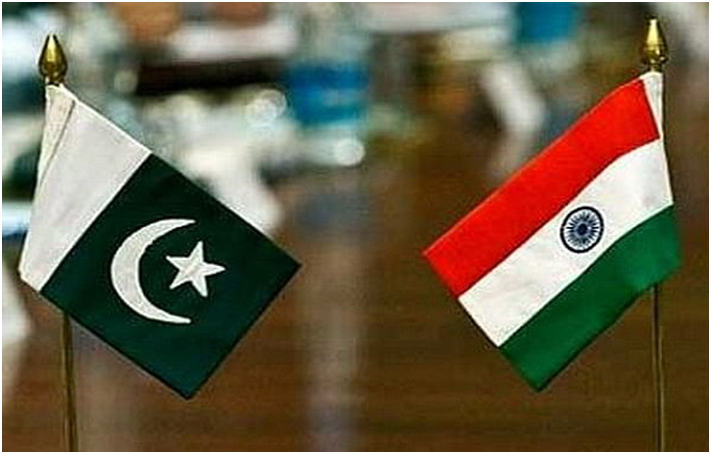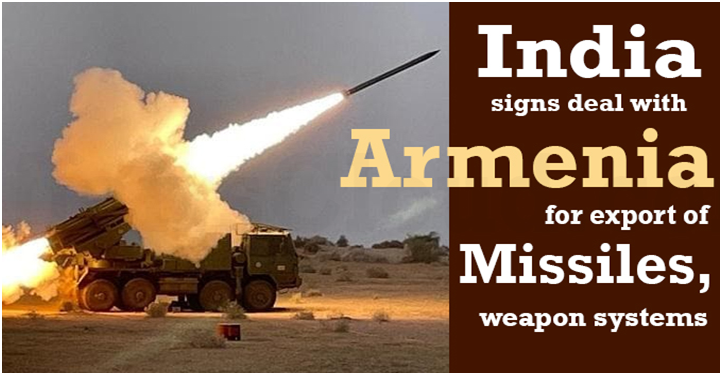5th Assembly of the International Solar Alliance (GS Paper 3, Environment)

Why in news?
- Recently, the Fifth Assembly of the International Solar Alliance (ISA) was inaugurated by Union Minister of Power and New & Renewable Energyin his capacity as the President, ISA.
- India holds the office of the President of the ISA Assembly, with the Government of France as Co-President.
About Assembly of the ISA:
- The Assembly is the apex decision-making body of ISA, in which each Member Country is represented.
- This body makes decisions concerning the implementation of the ISA’s Framework Agreement and coordinated actions to be taken to achieve its objective.
- The Assembly meets annually at the ministerial level at the ISA’s seat.
- It assesses the aggregate effect of the programmes and other activities in terms of deployment of solar energy, performance, reliability, cost, and scale of finance.
Agenda of Fifth Assembly of the ISA:
- The Fifth Assembly of the ISA will deliberate on the key initiatives of ISA on three critical issues energy access, energy security, and energy transition.
- The deliberations and discussions among representatives from 110 Member Countriesare expected to lead to a greater consensus among the comity for promoting the deployment of solar power.
What isInternational Solar Alliance (ISA)?
- The ISA was conceived as a joint effort by India and France to mobilise efforts against climate change through the deployment of solar energy solutions.
- It was presented by the leaders of the two countries at the 21st Conference of Parties (COP21) to the United Nations Framework Convention on Climate Change (UNFCCC) held in Paris in 2015.
- With the signing and ratification of the ISA Framework Agreement by 15 countries on 6 December 2017, ISA became the first international intergovernmental organisation to be headquartered in India.
- ISA is a coalition of solar resource rich countries lying fully or partially between the Tropic of Cancer and the Tropic of Capricorn to specifically address energy needs by harnessing solar energy.
- The Paris Declaration establishes ISA as an alliance dedicated to the promotion of solar energy among its member countries.
Significance:
- It works with governments to improve energy access and security worldwide and promote solar power as a sustainable way to transition to a carbon-neutral future.
- ISA’s mission is to unlock US$ 1 trillion of investments in solar by 2030 while reducing the cost of the technology and its financing.
- It promotes the use of solar energy in the Agriculture, Health, Transport and Power Generation sectors.
- ISA member countries are driving change by enacting policies and regulations, sharing best practices, agreeing on common standards, and mobilising investments.
Way Forward:
- ISA is partnering with multilateral development banks (MDBs), development financial institutions (DFIs), private and public sector organisations, civil society, and other international institutions to deploy cost-effective and transformational solutions through solar energy, especially in the least Developed Countries (LDCs) and the Small Island Developing States (SIDS).
World Bank appoints neutral expert, chairman of Court of Arbitration
(GS Paper 2, International Organisation)
Why in news?
 Recently, the World Bank has appointed a “neutral expert” and a chairman of the Court of Arbitration regarding the Kishenganga and Ratle hydroelectric power plants, in view of disagreements and differences between India and Pakistan over the 1960 Indus Water Treaty.
Recently, the World Bank has appointed a “neutral expert” and a chairman of the Court of Arbitration regarding the Kishenganga and Ratle hydroelectric power plants, in view of disagreements and differences between India and Pakistan over the 1960 Indus Water Treaty.
Experts appointed:
- Michel Linohas been appointed as the Neutral Expert and Sean Murphy has been appointed as Chairman of the Court of Arbitration.
- They will carry out their duties in their individual capacity as subject matter experts and independently of any other appointments they may currently hold.
Indus Water Treaty (IWT):
- India and Pakistan signed the treaty in 1960 after nine years of negotiations, with the Washington-based World Bank being a signatory.
- The treaty sets out a mechanism for cooperation and information exchange between the two countries regarding their use of the rivers.
- Under the Indus Water Treaty (IWT), all the waters of the eastern rivers Sutlej, Beas, and Ravi amounting to around 33 million acre feet (MAF) annually is allocated to India for unrestricted use.
- The waters of western rivers Indus, Jhelum, and Chenab amounting to around 135 MAF annually have been assigned largely to Pakistan.
- India is permitted to construct the run of the river plants on western rivers with limited storage as per criteria specified in the treaty.
Contention:
- However, India and Pakistan disagree over whether the technical design features of Kishenganga and Ratle hydroelectric power plants contravene the Treaty.
- Pakistan asked the World Bank to facilitate the establishment of a Court of Arbitration to consider its concerns about the designs of the two hydroelectric power projects, while India asked for the appointment of a Neutral Expert to consider similar concerns over the two projects.
What’s next?
- The World Bank continues to share the concerns of the parties that carrying out the two processes concurrently poses practical and legal challenges.
- The World Bank is confident that the highly qualified experts appointed as Neutral Expert and as members of the Court of Arbitration will engage in fair and careful consideration of their jurisdictional mandate, as they are empowered to do by the Treaty.
India will export Pinaka rocket to Armenia
(GS Paper 3, Defence)
Why in news?
- India is all set to export its indigenously-manufacturedPinaka rocket launcher to Armenia.
- Armenia has placed an export order to be completed within two years and Nigeria and Indonesia are in line to make a purchase.
About Pinaka Rocket launcher:
- The rocket launcher gets its name from the legendary bow of Shiva.
- It is a comprehensive system that integrates high energy propulsion, submunition warheads, servo- controlled launcher structure as well as fire control computer.
- The system is mounted on a Tatra truck for mobility.
Key features:
- The rocket launcher can fire 12 HE rockets in 44 seconds.
- It delivers lethal and responsive fire against a variety of area targets such as exposed enemy troops, armoured and soft skin vehicles, communication centres, air terminal complexes, fuel and ammunition dumps.
- It allows ground forces a deep strike option and is capable of hitting critical military installations.
- The Pinaka has six launchers that can neutralise an area measuring 1000 meters x 800 meters with a range of 60 to 75 kilometers, and a DIGICORA MET radar.
Deployment:
- It is designed to replace the Armenian Army’s Russian-built BM-21 Grad launchers.
- The first Pinaka Mk1 Indian Army regiment was raised in February 2000.
- It has since been inducted into the Indian Army in large numbers, which is in the process of fielding 10 Pinaka Mk-1 regiments.
- The upgraded version of the Pinaka rocket launcher reportedly has a range in excess of 90 kilometers.
- It was also deployed more recently at India’s border with China amid tensions over Ladakh.

Developed by:
- It was developed by the Defence Research and Development Organization (DRDO) based on an 8×8 vehicle.
- The Armament Research & Development Establishment (ARDE), Pune and High Energy Materials Research Laboratory (HEMRL), Pune also contributed to its development.
India’s geopolitical play:
- India’s move comes in the backdrop of Armenia being involved in a conflict with Azerbaijan (backed by Turkey, which has recently towed Pakistan’s line on Kashmir).
- India earlier in October called for the “aggressor side” in fighting along the Armenia-Azerbaijan border to “immediately cease hostilities”.
- The Pinaka MBRL would be extremely effective in any border conflict while targeting armoured formationsBut experts say the Pinaka rocket launcher alone may not be enough to tilt the balance decisively Armenia’s way.
India’s defence exports:
- India registered defence exports worth Rs 8,000 crore in six months of the current financial year and aims to achieve the target of outbound shipments of Rs 35,000 crore by 2025.
Six new spider species discovered in India
(GS Paper 3, Environment)
Why in news?
- Arachnologists from the Centre for Animal Taxonomy and Ecology (CATE), Christ College, Irinjalakuda, have discovered six new species of spiders from across the country.
Habitat:
- The new species of spiders were found from the Garo hills in Meghalaya, the Thar desert of Rajasthan, Wayanad Wildlife Sanctuary, Kottappara hills near Kothamangalam, Thumboormuzhi butterfly garden near Athirappilly, and the University of Calicut campus.

Genus Siamspinops in Garo hills:
- Studies conducted on the Garo hills of Meghalaya resulted in the first spotting of the genus Siamspinops from India with a new species Siamspinopsgaroensis.
- This belongs to the family of flat spiders, Selenopidae. This spider lives in the crevices of rocks on hills and its flat body is suitable for this mode of life.
- The yellowish brown spider measures about 10 mm in length. There is a black circle around its eyes and black patches on the abdomen. After mating, females lay eggs and incubate them in an egg sac.
Jumping spiders:
- Two new species of spiders coming under the family of jumping spiders ( Salticidae) were discovered from the Thar desert of Rajasthan and the Kurichiyad forest ranges of the Wayanad Wildlife Sanctuary.
- Afraflacillamiajlarensis, the Thar species, is characterised by white fine hairs on a black head and black horizontal lines on the abdomen. This spider stays among dry leaf blades.
- Afraflacillakurichiadensis, the Wayanad species, is characterised by red patches around the eyes and white hairs on the abdomen. The bulged first pair of legs are also a special feature of this species. This spider lives in the moist deciduous forest of Kurichiyad.
Feather- legged spiders:
- The next spider species lacks a venom gland and belongs to the family of feather- legged spiders (Uloboridae).
- This new species has been named as Philoponellarostralis, due to the presence of a beak like structure on the male reproductive organ.
- This spider makes a special type of web under the leaves and it can subdue the prey with the help of woolly silk produced from their cribellum (additional silk producing organ in front of the spinnerets).
Spiny-legged spiders:
- Two new species of spiders belonging to the family of spiny-legged spiders (Oxyopidae) have been discovered from the Thumboormuzhi butterfly garden, near the Athirappilly waterfalls, and on the Calicut University campus.
- The former one is characterised by a yellowish body and is named as Oxyopespeetham.
- The latter one has been named as Oxyopesthumboormuzhiensis, to signify the locality where the spiders were spotted.
- The members of this family are commonly known as lynx spiders because of their lynx-like feeding behaviour.



 Recently, the World Bank has appointed a “neutral expert” and a chairman of the Court of Arbitration regarding the Kishenganga and Ratle hydroelectric power plants, in view of disagreements and differences between India and Pakistan over the 1960 Indus Water Treaty.
Recently, the World Bank has appointed a “neutral expert” and a chairman of the Court of Arbitration regarding the Kishenganga and Ratle hydroelectric power plants, in view of disagreements and differences between India and Pakistan over the 1960 Indus Water Treaty. 
